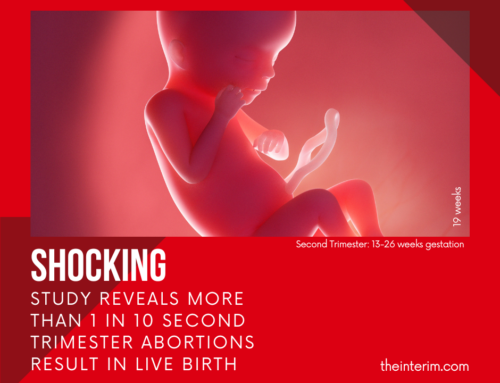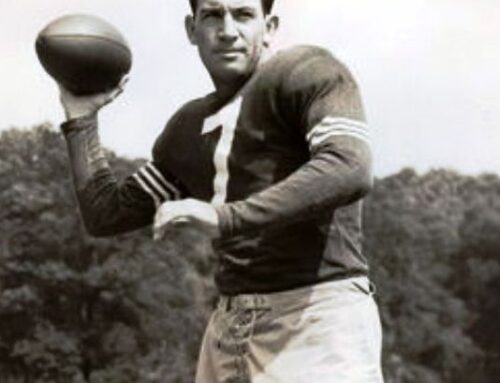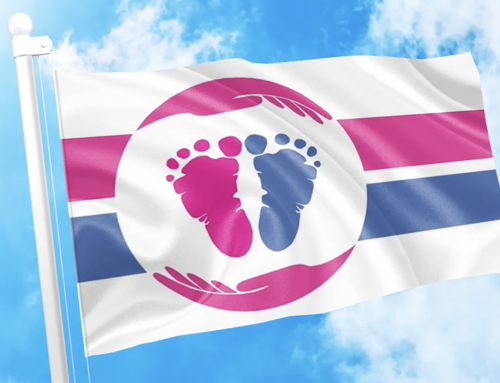If several recent media items can be used as a barometer, American journalists and television producers have sensed a change in the atmosphere of the abortion debate. A pro-life president is now in his second term, some U.S. Supreme Court judges (who may well be replaced by those favouring a reversal of the 1983 Roe v. Wade decision) are approaching retirement, and the pro-family, pro-life movement is growing stronger. These and other factors have the powerful media establishment working hard to raise the mercury back to its earlier level favouring abortion rights.
Television, of course, has the greatest impact. During the winter, Gagney and Lacey and St. Elsewhere, two popular series, both featured episodes designed to elicit support for abortion. As I watch very little television, I heard about these shows after they were aired. However, I made a point of watching Choices.
While the public relations people stressed that the special show was written “to give both points of view,” I find that I agree with Adele Nathanson who, after reviewing the show, commented that it was biased even before it began. The title, she pointed out, demonstrated that the producers believed that to kill is an acceptable choice. Those who watched the show will be saddened to discover that the producer/writer made the special because of his experience. He was the George C. Scott character – the older man in a second marriage who told his much younger second wife to abort their child because he couldn’t be bothered with fatherhood. A glossy television special seems small recompense for lost fatherhood.
Parental guidance?
Shortly after Choices, the March issue of Life magazine hit the street. In a theme issue devoted to “Teenage America,” a lengthy article detailed “the anguish of an eighth-grader’s abortion.” Like Choices, the bias was apparent right from the beginning: an editor’s note stated, “All names have been changed to protect the identity of the family and to spare them reprisals.” Clearly, Life editors believe that pro-lifers are vindictive people, waiting to pounce on anyone who relates her tragic story.
Fourteen-year old “D” is, predictably, one of the “hard case” stories. Which is not to deny that such sad stories do happen, but rather that such stories are preferred when a stock response of pro-abortion sympathy is desired from the reader. Such is the case here. While I do not have the space to detail all the many examples of Cliché situations and phrases used, the ones given below are enough to prove the point.
D’s childhood was marred by the acrimonious divorce of her parents. She and her younger brother were put in the custody of their father, a man who until then had been absent most of their younger years. D withdrew into herself, her school grades went down and she started smoking, drinking and experimenting with drugs.
D delays announcing her pregnancy (the result of a casual affair with an 18-year-old) until she is 26 weeks pregnant. By this time, D’s father had formed a liaison with another woman who, with her own two small children, thus created a “blended family.” Stretching credulity somewhat, the writer, Cheryl McCall, gravely assures us that the adults in the home accepted D’s denial that she was pregnant – even though she was found vomiting in the morning, had gained weight and was hiding her fatter figure beneath loose-fitting clothes.
More clichés
By the time the adults are told, the pregnancy is too far advance to obtain an abortion locally. D’s father accepts the fact that she is having a child and adoption is discussed – until an ultrasound establishes she is only 21 weeks pregnant. Suddenly, abortion becomes an option, one Denise is eager to take.
Her decision to abort is backed by her new boyfriend (not the child’ father), who would have opposed abortion if the child had been his. However, his mother, of whom D is fond, pleads with her not to go ahead. Her 9-year-old brother looks forward to being an uncle and even offers his $8 weekly allowance for child support. Religious “intolerance” predictably rears its ugly head through D’s “stepmother,” who is Catholic. She is quoted as arguing with D, “You might as well take a gun and take a baby and blow it away. It’s the same thing…I hope I’m making you feel bad because that’s my intention.
D’s father also is opposed to the abortion. As a “high Episcopalian,” he says he is “torn between D’s future and the avenue of abortion, the convenience of life and the moral and Christian aspect.” However, he does not ultimately appear to accept any responsibility for his daughter and threatens to charge the baby’s father with statutory rape, saying “you haven’t acted like an adult. You shouldn’t be messing around with a 14-year-old who’s not on birth control…I’m not taking the brunt of this because I didn’t do anything to cause it.” He doesn’t appear to consider that, as the parent of a minor child, he has a legal responsibility toward her.
Better scripts wanted
D’s mother (consulted by long-distance telephone) favours the abortion because she’s not even a young adult yet.” She dismisses the possibility of adoption which is, in her opinion, “fraught with peril” and could cause D “long-term emotional problems.
Mother and daughter have the last say and D’s parents (agreeing to put aside their mutual antipathy) drive her to New York where late abortions are available in a Manhattan clinic.
They are, we are told, apprehensive, since a neighbouring clinic had been bombed the afternoon before. The atmosphere is the clinic is that of “a combat station during a dubious cease-fire.” The author leaves no doubt in the reader’s mind as to where she stands: the bombing incident, she writes, “indicated that the so-called pro-life bombers were not aiming to kill.”
Several months later the family is back to “normal.” They “seem to agree now that the decision was the correct one.” McCall sums up, “they’ve all learned a little more about one another. They know what they can live with and what they can’t.” Putting to one side the unfortunate turn of phrase, McCall seems to be unaware that immediate post-abortion feelings are often those of relief. It is not until much later, and this is especially true of teenagers, that feelings of grief, resentment and anger surface. Will the Cheryl McCalls and the Life editors find that a story worth telling?
Television shows like Choices and magazine articles like this one are dishonest. Yes, they are emotional dramatizations of human situations but, instead of challenging the viewer or reader to think and develop, they merely affirm the old clichés. They end neatly, with the “easy” solution, and pretend that no harm has been done. They could and should provoke their audience to think more carefully about the matter.
Surely talented and creative people could come up with good, marketable scripts and articles detailing a young woman proudly carrying her baby to term and releasing the child, with all the heartaches that entails, to willing and overjoyed parents. Certainly, there are older men who, after the first shock has worn off, have welcomed their second families and rejoiced in having the leisure to know them better than they did their first ones while they were busy carving out careers.
The networks and magazines might be surprised at the higher ratings and increased sales. I know that I for one would quickly tune in to such programming.




